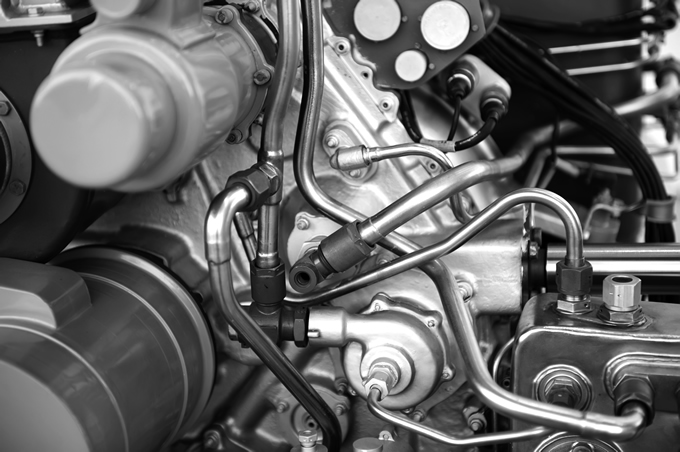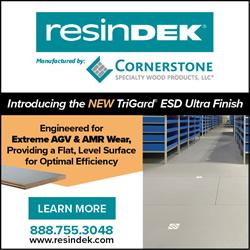Improving the Life and Performance of Critical Aerospace Components
Aerospace OEMs and MROs are continually seeking new ways to improve the performance and longevity of critical aerospace components such as those used in turbines, flight control systems, landing gear and hydraulic systems. To achieve this, these components must be designed and manufactured to withstand erosion, corrosion, extreme temperatures, high loads and even metal-on-metal contact.
However, there are additional challenges to consider beyond extending component life. Namely, the more immediate goal of finding new ways to increase the operational performance and fuel efficiency of aircraft through refinements in component and system design, materials and coatings. Even seemingly minor factors such as the surface finish of compressor blades, for example, play a key role in increasing the fuel economy of high bypass ratio turbofan engines.
Today, this is putting renewed attention on coating, plating or nitriding options that modify the surface of critical components to improve wear and corrosion resistance while providing for example the required coefficient of friction for metal-on-metal contact or the erosion resistance necessary to maintain surface finish requirements for optimum airflow in gas turbines and therefore engine efficiency.
This comes at an opportune time, given the industry’s transition away from hard chromium plating to more environmentally friendly alternatives. For many years, hard chrome plating was the standard for achieving wear and corrosion protection, but due to the European REACH regulations the application of hard chrome plating is now highly regulated.
Now these challenges are increasingly being met by thin film coatings applied by PVD and PACVD as well as with other techniques such as nitriding, which can provide even greater durability than hard chrome plating while still providing similar functional properties.

Aerospace-Specific PVD Coatings
Approved and field-tested in the aerospace industry, physical vapor deposition (PVD) and plasma-assisted chemical vapor deposition (PACVD) can be used to deposit thin film coatings to harden the surface of components. This can significantly increase the lifespan of components, reducing maintenance and downtime.
The coatings also have the advantage of being thin, typically 1-5 µm in thickness but can be up to 25µm for specific erosion restiant properties. Coating tolerances can be as low as +/-0.5 µm over a surface. This feature, in conjunction with close tolerancing, means that the component retains its form, fit and dimensions after coating without the need for re-machining.
One PVD coating, called BALINIT Turbine Pro from Oerlikon Balzers, is specifically geared towards protecting engine compressor blades, vanes or integrated bladed rotors (blisks) from erosion, pollution and corrosion. Often, previously these blades are left unprotected.
Oerlikon Balzers, a long time coating provider working in the aviation industry for over 20 years, recently achieved NADCAP accreditation at its facility in Guelph, Canada, which serves the US and Canadian aerospace markets. The company also operates NADCAP accredited customer centers in France, the UK and Luxembourg.
“In the aircraft industry, the goal is to reduce fuel use as much as possible,” explains Oerlikon Balzers Global Aerospace Segment Manager Toby Middlemiss. “To do this, manufacturers often polish the compressor blades and blisks to mirror finishes. This increases the airflow through the engine, which ultimately increases fuel efficiency.”
However, Middlemiss says that as blades foul in service, the efficiency of the compression system eventually drops.
“The debris particles in the air erodes the surface finish of the blades, they begin to get a matte finish and ultimately lose performance,” says Middlemiss. “By applying the [BALINIT Turbine Pro] coating, you can maintain the highly polished surface finish and retain the efficiency gain.”
BALINIT Turbine Pro utilizes a metal aluminum nitride (MeAIN) structure that results in an optimal relation of high hardness to residual compressive stress even under high thermal conditions. It can be applied to steels, super alloys and titanium components and has an extremely low surface roughness (down to 0.05Raµm) once the process is applied.
The high hardness of BALINIT Turbine Pro has already been proven in solid particle, liquid droplet, liquid cavitation, waterjet and other erosion tests with the coating on various substrates (steel, Inconel and titanium) in different coating thickness and high temperatures.
In the solid particle erosion test in which materials were evaluated based on mass loss, for example, BALINIT Turbine Pro demonstrated more than four times higher erosion protection than other PVD coatings, including titanium nitride (TiN). That value increased to more than 40X when compared to uncoated titanium and even more for steel.
Alternative to Chrome Plating
PVD and PACVD coatings also provide a viable alternative in replacing hard chrome plating.
Hard chrome plating has been consistently used in the aerospace industry to protect components from fretting, corrosion and wear. However, due to the carcinogenic hexavalent chromium salts used in the hard chrome plating process, the US OSHA and the EU REACH have imposed tight restrictions on chromium and cadmium plating.
Therefore, existing parts made with chromium and cadmium plating will need to be replaced and new parts will need to be manufactured using environmentally safe materials.
According to Middlemiss, some OEMs have attempted to replace hard chrome plated steel with uncoated, hardened stainless steel. The problem with this method is that stainless steel has poor low-frictional wear and sliding properties.
Another option that has been adopted is the use of tungsten carbide based thermal sprays. However, these coatings often require quite a bit of post-coating processing and time consuming grinding, which drive up the costs. On thin walled parts the relatively thick thermal spray coatings can also result in unwanted stresses and distortions of the components.
A better option is BALINIT C, a WC/C ductile carbide carbon of the DLC family (a-C:H:Me) coating that provides excellent wear and scuffing resistance while simultaneously reducing wear and friction for bearings, shafts and pins using in landing gear and engine mounts.
The BALINIT C coating has a high load-bearing capacity even under conditions of deficient lubrication or dry contact. Due to its low friction coefficient, it reduces pitting and fretting corrosion on sliding or moving parts on an aircraft, such as those found in actuators, compressors and pumps.
Bearings are another component that suffer from severe and disproportionately distributed abrasive wear. BALINIT C is particularly suitable for case-hardening as well as ball- and roller-bearing steels because it can be applied at temperatures below 200 °C.
The PVD coating can be applied not only to inner and outer races and cylinders but also to the balls in ball bearings in a highly uniform coating thickness of 0.5-1 μm. The slight increase in roughness is offset by the good burnishing qualities of the coating, which smoothes the raceway of the inner and outer rings, providing additional protection against scuffing and pitting.
“Given the ever-increasing performance requirements and lighter construction for the next generation of aircraft, along with the environmentally friendlier concepts for operation and maintenance, there are greater requirements on the components and tools,” says Middlemiss. “PVD and PACVD coatings are an effective means to improve operational performance, reduce operational costs, extend operating hours and reduce maintenance intervals.”
For more information about coating or nitriding solutions for components with Oerlikon Balzers, call (413) 222-2341, e-mail: balzers.components@oerlikon.com; or visit www.oerlikon.com/balzers
Comments (0)
This post does not have any comments. Be the first to leave a comment below.
Featured Product

